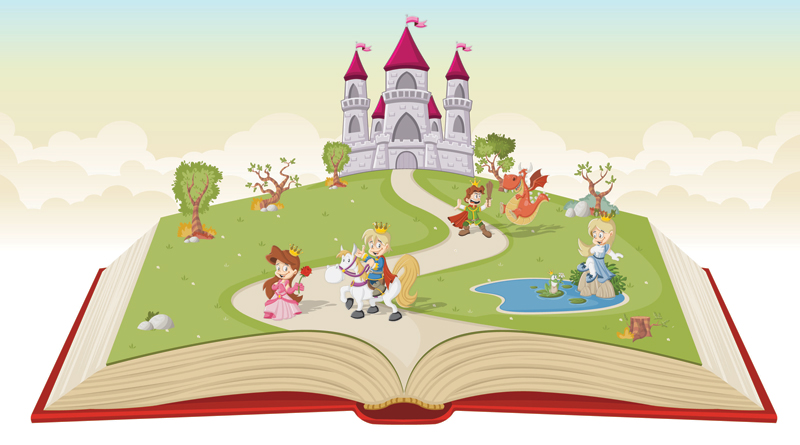

T V SARNGA DHARAN NAMBIAR -
Some tend to dismiss folktales as something that at best empower us to revel in phantasmal realms and enjoy — through weird characters — life’s mediocre urge to outwit others. But as we read them, we feel that they are much more than absurd narratives intended to amuse kids.
In fact, the messages embedded in folktales in general and fairytales in particular have long intrigued us. What do fairytales tell us?
We can’t but agree with Schiller that “deeper meaning lies in the fairytales of my childhood than in the truth that life teaches.”
We know that “Snow White and the Seven Dwarfs” reflects the terrible life of Margarete von Waldeck, a 16th century Bavarian noble lady, whose brother employed small children at his copper mine. The dwarfs refer to those children who were severely deformed as a result of abusive physical labour. Cinderella, the frog-prince and such numerous other characters carry a hidden reality under their fancy make-up.
For psychoanalysts, starting with Sigmund Freud and Carl Jung, fairytales offer an exciting entry into the complexities of the human mind or psyche. Freud held that fairytales and dreams originate from the same unconscious source. That’s why such narratives are dreamlike, often throwing out of the window any semblance of logic. Freud also identified sexual undertones in the stories.
As for Carl Jung, the characters in fairytales are nothing but archetypes and primitive symbols that populate the “collective unconscious”. Jungian analysts hold that children enjoy fairytales as their minds are still connected with the deeper layers of the collective unconscious. Jungian therapists also feel that each character within a tale could be an aspect of personality.
Bruno Bettelheim considers fairy tales as an important tool for children learning the art of negotiating reality in a world controlled by adults. In Uses of Enchantment: The Meaning and Importance of Fairy Tales, he writes that despite all the angry, anxious thoughts in the child’s minds to which fairy tales give body and context, such stories always have happy endings, which the child cannot imagine on his own. Herein lies the stories’ appeal factor.
Fairytales also reassure us that at the end of a depressing day, the final victory is for the good-at-heart — even if they are weaklings. At the same time characters such as Cinderella declare that the pursuit of pleasure is no smooth sail for children.
The Sultanate has a strong storytelling tradition, and the characters — clever animals, princes and princesses, genies and traders — navigate the worlds of magic, heroism and mystery with élan. The collection of traditional Omani folktales Halimah and the Snake, by Grace Todino-Gonguet, has made the Sultanate’s amazing folktale treasure accessible to a wider section of readers. Also, Khadija bint Alawi al Dhahab’s compilation My Grandmother’s Stories: Folk Tales from Dhofar, is sure to capture the imagination of children and grown-ups alike.
We see not only innocent, benevolent characters in Omani folktales; evil, jealous and sadistic minds too assert themselves in the stories. It’s odd, then, that we find depressingly few efforts at analysing Omani folk/fairy tales for their psychological and cultural undercurrents.
Dr Aida al Nablawi’s study throws some light on how Omani folktales portray children with disabilities by looking at the Omani community’s diverse values and belief systems. Her focus is on Omani society’s perception of disabled children and its reflection in folktales, and to what extent that perception is defined by culture and social norms. Along with this she analyses how folktales stereotype differently abled children.
She notes that some Omani folktales with special-needs children as central characters portray them as productive members in their families and local communities, showing bravery and an uncompromising stand against injustice. Yet others categorically warn against underestimating or discriminating against disabled children inside families and outside, and deplore behaviours of neglect and denial in dealing with them.
Stories such as Al Qahs and The Twin sketch the negative consequences of abusing disabled children, suggesting such mistreatment is not just immoral but irreligious also, and position them a notch above their normal peers.
Most Omani folk/fairytales showcase all the trappings of the typical male-dominated traditional society. While mothers tend to be more caring towards disabled children, they are constrained to freely express their feelings and protect the children from discrimination from father figures.
The focus of some stories is the despicable attitudes and entrenched beliefs of the society, as is the case with Saloom. The mentally challenged Saloom is regularly abused by his villagers, who call him “crazy Saloom” and feel no qualms about isolating the child. But the story doesn’t eulogise the society’s laissez-faire approach; it demands a rethink of the pathetic stereotyping of disabled children, and advocates their empowerment and acceptance.
It’s interesting that the Omani folk narrative has a thread, which, while making full use of the possibilities of the magical, remains refreshingly pragmatic.
Oman Observer is now on the WhatsApp channel. Click here



